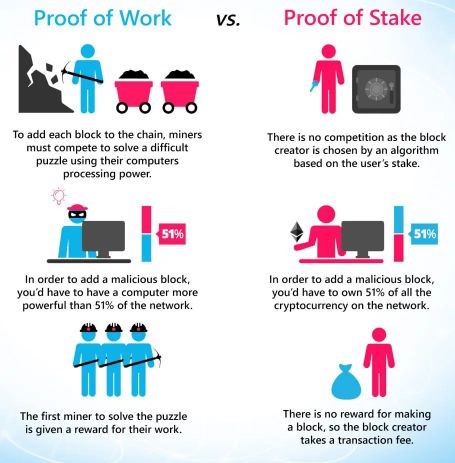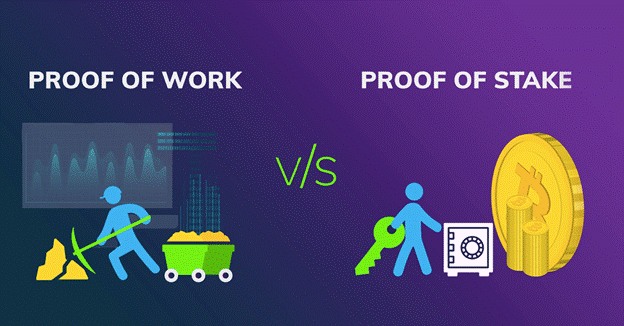Crypto mining is a rigorous business. However, it doesn’t have to be. The Ethereum community is working on modalities to change how people mine currency to reduce blockchains carbon footprint. The modality it’s working on is known as proof of stake (POS). The POS is an alternative to proof of work (POW), which Ethereum and Bitcoin are currently utilizing. Both POW and POS are consensus mechanisms.
Consensus Mechanism
At a basic level, public blockchains are just databases.
Several databases set permission for who to access and edit them. Despite being convenient, this centralized system of control is vulnerable to hacks. In contrast, blockchain makes anyone running their software responsible for updating them. Wouldnt that be messy?
Blockchains use consensus algorithms or consensus mechanisms. The mechanism keeps the network humming, ensuring legitimate transactions only are factored to blocks. It’s like all the nodes have to ascertain what is accepted.
In doing so, they shield against 51% of attacks.


Proof of Work
Bitcoin utilizes a proof of work consensus algorithm to prevent attacks, enabling it to spend funds twice.
The system directs people to use electricity and hardware for the network to process transactions.
In proof of work, miners solve complex puzzles to complete the blockchain transactions on top. They have to verify the legitimacy of the transaction. And as a reward, they are compensated in cryptocurrencies such as Eth or BTC.
Bitcoin’s design uses Proof of Work. Yet, other cryptocurrencies such as Ethereum made its replication.
However, this system requires a lot of electric power and machines working on a problem to find a solution.
Proof of Stake
As of late, Ethereum developers are working on a distinct set of upgrades, Ethereum 2.0. Clearly, the Ethereum 2.0 will run on Proof of Stake and will integrate with the Ethereum main net.
Notably, proof of stake on Ethereum 2.0 has the same objectives as proof of work. In other words, to securely verify transactions on the blockchain.
On the other hand, PoW miners consign hardware resources such as Large computers, PoS validators consign their cryptocurrencies.
With proof of stake, validators must stake/lock up at least 32Eth, to be given a chance to verify transactions in a block and receive some fee.
The staked/locked up crypto secures the network by the blockchain.
Advantages of Proof of Stake Over Proof of Work
- You dont need super-fancy, expensive hardware to earn. Just staking your cryptocurrency is enough.
- Due to lower hardware requirements, PoS consumes less energy compared to PoW.
- PoS allows more people to play a part in running an Ethereum node. Thus, giving in to further decentralization and resistance to 51% attacks.
How Does the Network Choose?
The network randomly chooses validators to propose new blocks.
Moreover, they are in several committees of 128 nodes, which change daily. When a new block of a transaction is created and added to the database, the PoS selects several committees to ratify that the proposed block is correct.
Validators are awarded for making blocks and ratifying that other blocks are being made. If validators are offline or making false attestations, there is a penalty.
Suppose they try to attack the network, they may end up losing their entire stake.
The algorithm is statistically safe from any attack. According to ConsenSys, “There is less than a 1 in a trillion chance that an attacker controlling 1/3 of the validators on the network would control ⅔ of the validators in a committee to successfully execute an attack.”
The Future
Most altcoins use proof of stake, Cardano, Algorand are just a few. Ethereum is joining them soon. Seemingly proof of stake is the future of blockchains.





